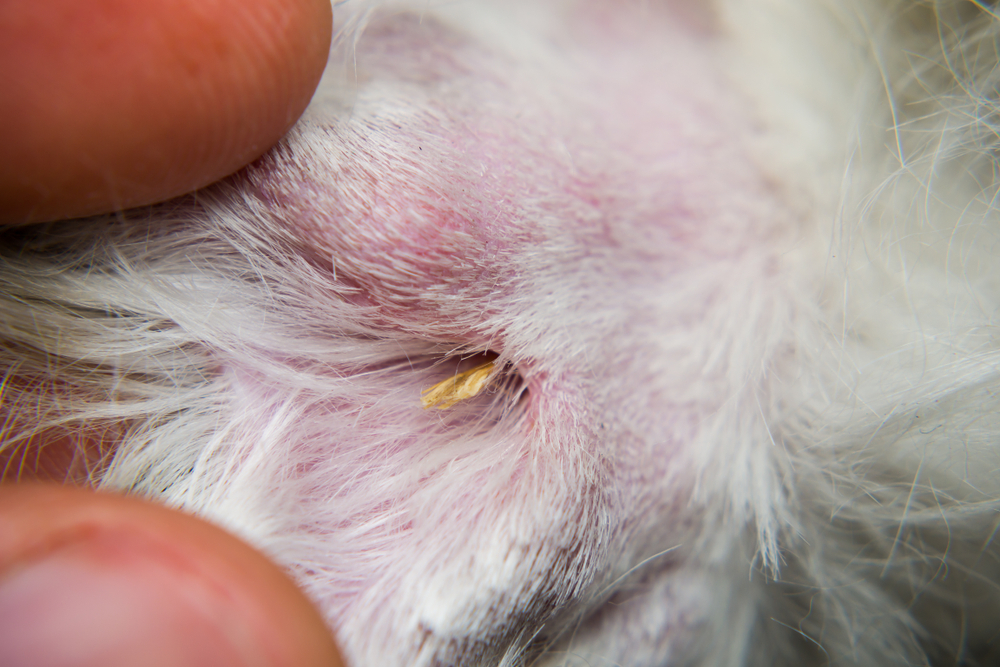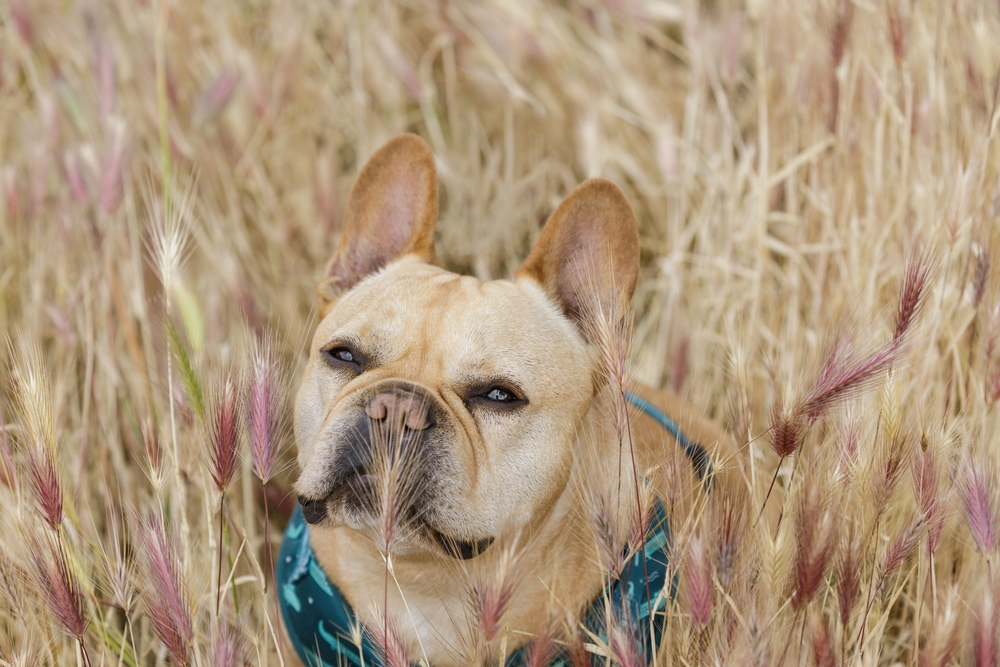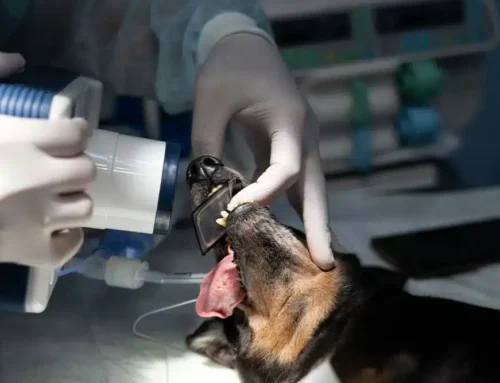The term “foxtail” implies something fuzzy and soft, but foxtails pose a significant threat to your furry companion. These grass-like weeds, prevalent in Western states, including Nevada, can lead to infections, abscesses, and other serious health issues for pets. Understanding the danger and taking preventive measures are crucial for keeping your pet safe and healthy. Our Peak Pet Urgent Care team explains why foxtails should be on your radar as a pet owner.
What are foxtails?
From the genus Bromus, foxtails, commonly classified as cheatgrass, have a bushy end with sharp, barbed seed heads. Foxtails produce spikelets designed to burrow into the ground for propagation, but their structure makes them hazardous to animals. They are commonly found in fields and parks and along hiking trails, making encounters almost unavoidable for pets who spend time outdoors.
Why do foxtails pose a danger to pets?
The barbed structure of foxtail seeds allows them to easily attach to pets’ fur, skin, and tail. Once attached, they can puncture the skin and continue to burrow, causing a variety of health issues. Certain exposed areas of pet skin, such as ears, eyes, genitals, nose, or between toes, are vulnerable to foxtails. Once embedded, these spikelets can cause irritation, infection, and, in severe cases, abscesses or systemic health conditions.
Signs of foxtail injury in pets
Recognizing the signs of foxtail-related issues is critical for prompt intervention. They can include:
- Persistent shaking or tilting of the head
- Pawing at the affected area
- Excessive sneezing or nasal discharge
- Limping or licking at the feet
- Licking excessively at the genitals
- Scooting the hindquarters
Preventing foxtails from harming your pet
Because foxtails are invasive and grow everywhere, it’s unlikely you can keep your furry friend away from them entirely. However, you can take steps to minimize your pet’s exposure, including:
- Plant recognition — Know what foxtails look like so that when you are out with your dog, you can keep them from roaming through the plants.
- Leash your dog — When you’re on your walks, keep your dog on a leash and lead them away from open areas where foxtails grow.
- Maintain your yard — If your yard contains cheatgrass, consider having it professionally removed. This removal is best done when the grasses are still green; otherwise, the dried seeds can remain in the yard and pose a threat to your furry friend.
- Groom your pet — Long-haired breeds are more at risk because their fur conceals the foxtails. Consider haircuts for your very-furry pal, especially during the months when foxtails are more of a problem.
- Inspect your pet — After spending time outdoors with your pet, thoroughly inspect their skin and brush their fur to remove any foxtails or other debris they might have picked up.
When to seek veterinary care

If you suspect your pet has encountered foxtails or they are showing signs of foxtail-related issues, prompt veterinary attention at our Peak Pet Urgent Care is essential. Foxtail removal can be complex, sometimes requiring surgery and medications, such as antibiotics, depending on where the foxtails are found in the body. Embedded foxtails not only can cause infections and abscesses, they can also lead to life-threatening health conditions, especially if they are in the lungs, gastrointestinal system, or urinary tract. Immediate treatment is required to get your four-legged friend back on their paws.
While foxtails may seem innocuous, they pose a serious threat to pets who spend time outdoors. By understanding the dangers and taking proactive measures to prevent encounters, you can help keep your furry companion safe. Vigilance, regular grooming, and prompt veterinary care are crucial to minimizing the risks associated with these troublesome weeds. If you suspect your pet has an embedded foxtail, contact our Peak Pet Urgent Care team for prompt treatment.







Leave A Comment